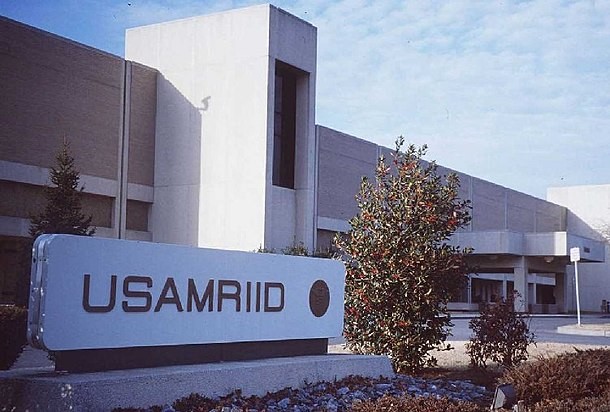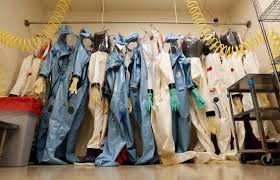United States Army Medical Research Institute of Infectious Diseases
Introduction
Text-to-speech Audio
Images
Visitors and passerbyers will see this the "Dan Crozier" building.

Researchers carefully study microbes

Typical protection suits.

Backstory and Context
Text-to-speech Audio
USAMRIID’s predecessor, the Army Medical Unit, began in 1956 with Project CD-22, in which volunteers were exposed to a highly pathogenic strain of query fever, under the command of Col. William D. Tigertt. Throughout the 1960s, modern principles of biosafety were pioneered at Fort Detrick. In 1969, the institution was renamed "U.S. Army Medical Research Institute of Infectious Diseases" and a new research building was built (the present USAMRIID laboratory).
In 1978, the USAMRIID established an Aeromedical Isolation Team, which served to safely evacuate and manage contagious patients under BSL-4 conditions. Having only dispatched 4 “real world” missions in 32 years, the ATI was disbanded in 2010.
In 1979, the Sverdlovsk anthrax leak necessitated a program which sought to improve the existing anthrax vaccine. Later, in 2001, the site faced problems such as anthrax leaving supposedly-secure areas. The FBI also considered lab scientist, Bruce Ivins, as its chief suspect in the 2001 anthrax letters, from which five people died.
In 2019, laboratories at USAMRIID were shut down by the CDC due to cited safety issues, and fPentagon funds for the facility have been frozen due to potential financial mismanagement. However, in March 2020, President Donald Trump recruited the lab in an effort to develop a COVID-19 vaccine.
Sources
Donalley, John M.. Army lab fights corona virus and its own demons, Roll Call. March 26th 2020. Accessed September 17th 2020. https://www.rollcall.com/2020/03/26/army-lab-fights-coronavirus-and-its-own-demons/.
